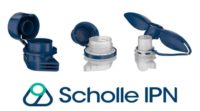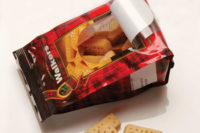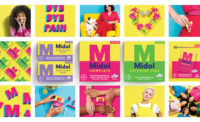For several years now, HQC has been designing and manufacturing custom fitments for pouches. And despite the challenges involved in doing so, the Oswego, Illinois-based company has continued to move this sector of the market forward. Recently, HQC has been involved in several high-profile custom fitment projects. It helped design a timed release fitment for a pouch-packaged deer attractant. It also recently revamped a stock product to create fitments for deviled eggs. A Chobani inserted pouch fitment and fitment for Briggs and Stratton oil are other examples.
Flexible Packaging recently caught up with HQC president Blair Pasternak for more information on creating custom pouch fitments and how this sector of the market has moved forward over the years:
On the benefits of pouch fitments:
Pouch fitments are either the complete part or part of a dispensing system(s). This allows the fitment to control the flow and even the shape of the product being dispensed. Fitments allow the pouch to be resealed for multiple uses. These pouches may also contain product that may not allow other resealing systems to seal the product. For instance, the product may hold mating parts from locking together properly to create the seal.
The fitment is literally the connection between the pouch and the customer. The delivery of the product along with a reliable way to contain the product in the pouch until ready to reuse is a benefit to the end user. Fitments allow many different avenues to deliver products out of a pouch that create a memorable experience for the customer. The fitment and closure can bring that uniqueness to a product and allow for brand recognition, or even to bring a brand to a new level of awareness by having the product in a pouch, with a stock or custom fitment.
On some of the unique applications for pouch fitments:
As product is pushed through a fitment, the fitment can change the shape of the product. The shape of the product after it goes through the fitment is part of the product recognition. We offer fitments for ice cream pouches and egg yolks. The ice cream swirl and the egg yolk in a deviled egg – these are shapes we see as the way the product should look like, and it helps in customer acceptance. We are involved in consumer tests and a majority of test consumers like the pouch with custom fitments, even with added costs.
We even make fitments that allow the product to be dispensed in a timed fashion, like for wildlife attractants drips at a controlled amount. Other fitments we make, the inside through hole is part of a system that another part fits in, and they are used as cartridges for food products, inks and colorants. This market is showing some real interest in them.
On fitments using sustainable materials:
We currently are doing research in making fitments and closures from recycled and sustainable sources. It is important to remember that not all materials will weld into a pouch and test to the same standards. Testing is done to find the best combinations both in the sealant film and the molding resin. We have been testing fitments for about two years and are having good results – part of that also involves the fitment inserting process, a step often overlooked. Sustainable materials are limited on the market, and getting suppliers to be involved is part of the issue.
On key considerations in designing custom fitments for pouches:
What are the expectations and requirements? You must know what is in the pouch and whether it will affect the film structure. How will the pouch do in low temperatures and high temperatures in the truck when being shipped? The biggest issue is knowing the complete lifecycle of the spouted pouch.
Can it be filled? If so, does the filler need rail slots to hold the pouch? I would say that 90 percent of the issue is that since spouted pouches require multiple manufacturing and filling processes, and there can be various options in just film structure. Most projects are not started by knowing all the expectations both in manufacturing and in marketing. We have had complex projects take one year from concept to completion and have others that have taken four years. The difference was the time invested in the beginning to know what we want this product to do. Often the time is not spent up front and in person to lay out these expectations. Also there is no real data when it comes to spouted pouches as what does and does not work.
Flexible is a young market, and we are taking advantage of the possibilities in flexible. We are asking flexibles to do things that haven’t been done before. Right now we are working on three concepts that have never used this packaging format. That’s the fun part. However, there is a very limited resource pool for spouted pouches, as opposed to the bottle and closure market that is mature. That is a problem, flexible packaging is much different than the bottle and closure market, and so are the expectations. A bottle has shape memory and a pouch does not. That makes a big difference. A bottle will pull air back in after being squeezed. A pouch will not. Yet designers, engineers and marketing are so used to bottles, they may not think about this until it’s too late.
On potential perils of poor fitment design and manufacturing:
Not all materials even in the same family such as HDPE are best for inserting. What could be a benefit in producing an injection molded product could be an issue when it is inserted into a pouch. Many people do not know, but some injection grades of material have releases in them. These releases make it so the plastic doesn’t stick. Over time, they can even “bloom” to the surface and cause a poor bond with the sealant layer after insertion. We mold and test fitments to the materials used. We have seen major differences just in changing films and or fitment materials.
There’s also the size consistency of the seal base. In molds that make multiple parts at a time, there are variances in seal based dimensions. If these vary greatly, it changes the seal strength when inserting — both in heat sealing and even more in ultrasonic sealing. Since the tooling for inserting is a fixed size, if the seal bases (boats) vary so does the seal strength. Since we do fitment inserting, we understand how these differences affect spouted pouch quality. You really need to have an understanding of film along with fitment inserting process and even the design of the seal bars.
Many of the issues are not only related to film and fitment. Many times, we get involved in the “it’s a film failure” or “it’s a fitment failure,” only to find out that it is an inserting process or seal bar design issue. We had a project that was failing at a 7 psi burst rate. We did nothing different with the film or the fitment. We designed seal bars with design features that increased the burst strength to 20-plus psi. The fitment inserting has a big effect on the spouted pouch quality. Unfortunately, people think more heat and pressure is the solution. Often, that makes the quality worse. We work to educate customers in the whole spouted pouch process. It is a major difference between success and failure when your customer understands why.
Inserting must be part of the development process. Test and verify.
HQC





